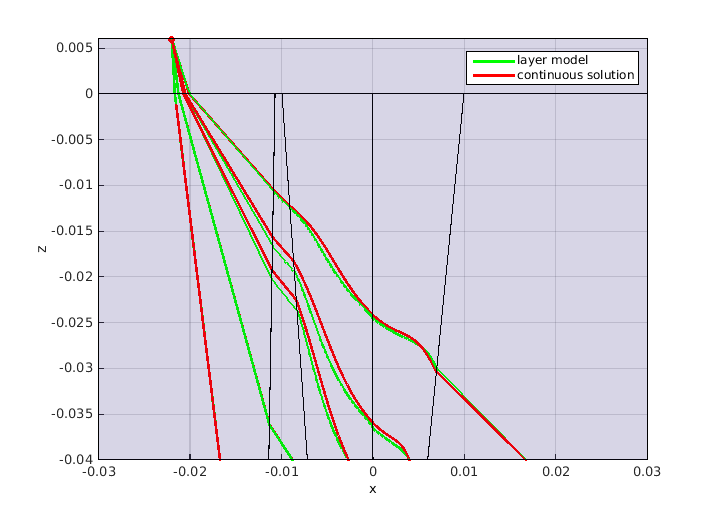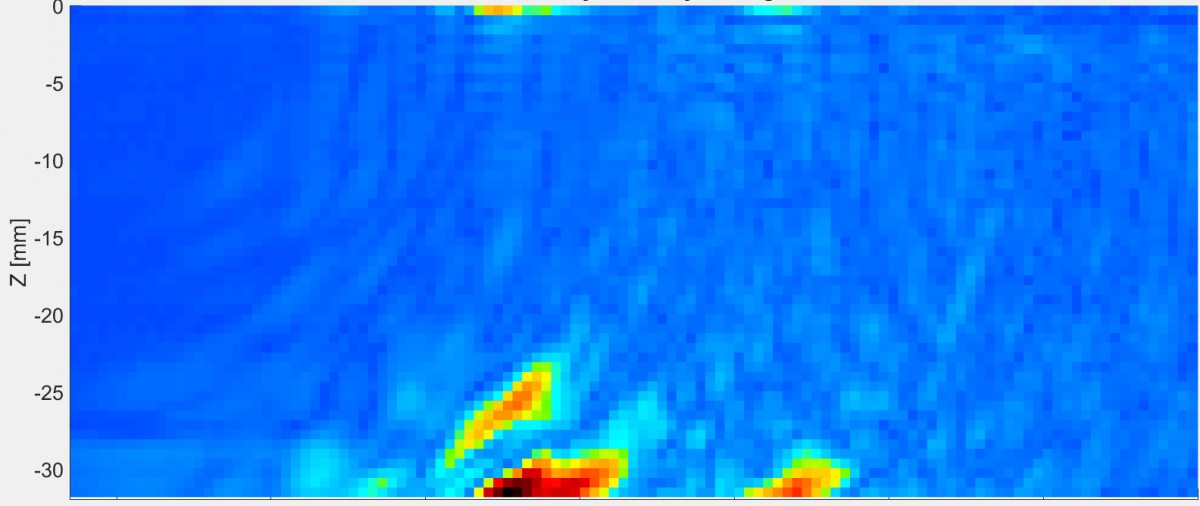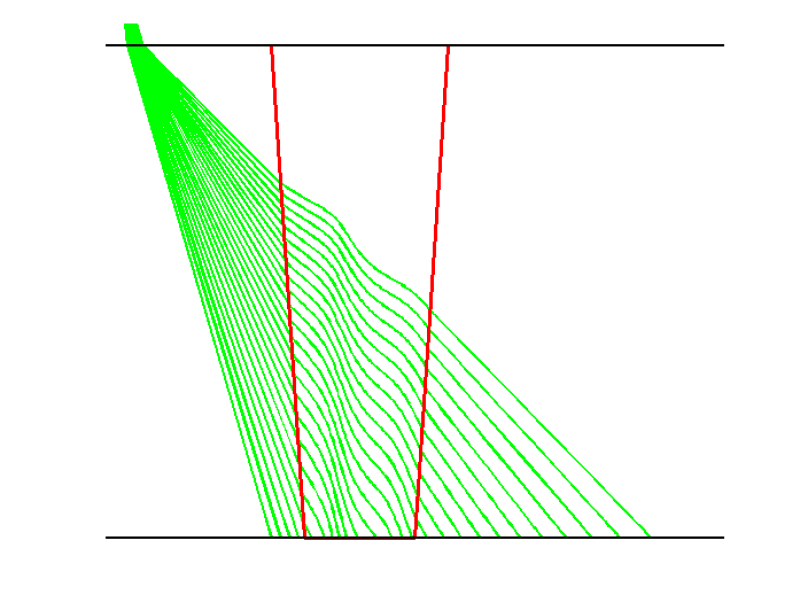Ultrasonic non-destructive testing of austenitic welds is complicated due to anisotropic materials and the columnar grain structure of the welding seam. To achieve reliable results, the columnar grain structure as well as the elastic constants of the material have to be known. In this project, we develop methods for identification of parameters of the Ogilvy model describing the grain orientation from measured ultrasound travel times and amplitudes. The identification relies on the solution of two-point boundary value problems. As another application, these boundary value problems are used to compute times of flight for use in the Synthetic Aperture Focusing Technique (SAFT).
Flaw detection in austenitic welding seams by ultrasound difficult due to:
- anisotropic, inhomogeneous material (grain formation during welding according to temperature gradient)
- different direction of phase and energy propagation
- waves propagate along curved paths with varying velocity
Instead of simple A- or B-scans, more advanced imaging techniques like SAFT (Synthetic Aperture Focusing Technique) are required.
For computing the SAFT reconstruction, A-scans from different positions are taken. After a discretization of the region of interest (e.g. the weld) into cells, times of flight to each cell are computed. Then the measured amplitudes at these times are added up, leading to constructive interference if a reflector like a crack is present in the cell, or cancelation due to random phase shifts.
Times of flight can be computed using ray tracing. Instead of common semi-analytic approaches, which discretize the weld into homogeneous layers, we use an ODE boundary value problem, allowing to take continuously varying material parameters, especially the columnar grain orientation, into account.

Our approach leads to significantly better population of the travel time matrix with only a minor increase in computational cost.

SAFT reconstruction. High amplitude (deep red) indicates a flaw in the weld.
The computation of travel times requires knowledge of the grain orientation in the weld. These can be estimated from amplitude or traveltime measurements using a Gauss-Newton method.
